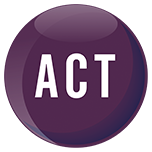A round-up of events in the Middle East region
Two key reports point to strong and sustained growth in Islamic finance worldwide, with Gulf Cooperation Council (GCC) countries providing a significant contribution to its expansion.
Islamic finance assets grew to $1.8 trillion over 2014, according to the Islamic Finance Development Indicator Report, a joint initiative from Thomson Reuters and the Islamic Corporation for Development (ICD), which is the private-sector development arm of the Islamic Development Bank.
The report, released for the third consecutive year at the World Islamic Banking conference in Bahrain in December, tracks Islamic banking activity across 108 countries worldwide and covers Islamic banking, takaful, sukuk and Islamic funds. It records a 9.4% increase on 2013 asset levels.
Those levels will increase by a projected 10% per year over the next five years, according to Thomson Reuters and ICD researchers, who expect them to reach $3.24 trillion by 2020.
The EY World Islamic Banking Competitiveness Report 2016 says Islamic banking – also referred to as participation banking – has a compounded annual growth rate of 16%. Significant Muslim populations in 10 rapidly emerging economies are helping secure that growth, providing unmet demand. Among GCC countries, the sector is showing an above average growth of 18%.
Falling oil prices, economic diversification and young populations are helping to drive the ambitions of financial institutions in the GCC, the report’s authors say. However, there is more to achieve on mobile banking. While 98% of the banking customers in the Middle East that were surveyed have smart phones, take-up of mobile banking services via smart phones is low, with 46% of the crucial under-35-year-old market sector reporting that mobile banking services are difficult to access.
Overall, however, prospects look solid. “The Islamic finance industry has demonstrated tremendous growth over the past few years,” says Nadim Najjar, managing director, Middle East & North Africa, at Thomson Reuters. “We have seen the industry develop a conducive ecosystem that made it possible for many countries to enter this space. Currently, there are more than 1,000 Islamic financial institutions, most of which are located in the GCC and Southeast Asia, and we expect this number to increase significantly in the next decade.”
A range of global supply and demand factors have prompted the World Bank to revise its forecast for crude oil prices for 2016, from $51 to $37 per barrel.
The announcement, in the World Bank’s latest Commodity Markets Outlook, takes into consideration a range issues, including the return to oil exporting by Iran, cost cuts in the US oil industry, a milder than expected winter in the northern hemisphere and weakening demand in emerging economies.
Oil prices fell by 47% last year; the World Bank expects the decline to continue before gradually recovering over the course of the year. The correction in the oil price is likely to be smaller than previous rebounds, the bank’s economists believe. “Low prices for oil and commodities are likely to be with us for some time,” said John Baffes, senior economist and lead author of the report.
Since sanctions against Iran were lifted last month, Tehran’s business quarter has attracted European and Asian bankers and dealmakers keen to get back into business and regain a foothold in the country’s $400bn economy.
Iranian president Hassan Rouhani has conducted a European tour and is reported to have shaken hands on business deals worth $22bn with Italy alone, according to news agency Bloomberg. Most US companies will remain outside the renewing of business relationships as they face continued restrictions on trade with Iran.
Much attention is being focused on the country’s ageing aircraft fleet; representatives from Airbus, Lufthansa and Bombardier are courting Iran’s aviation sector. Iran Air’s 45 airliners are 27 years old, aged by global standards.
Healthcare, motor and luxury goods brands are also featuring in a restored international market, however. Investment bankers, corporate financiers and procurement specialists are likely to feel the effects.
Deals with a Middle Eastern involvement announced during 2015 grew by 13% compared to the previous year, according to Thomson Reuters, reaching $56.2bn and marking the best period for M&A activity since 2008.
Middle Eastern equity and equity-related issues on the other hand declined by a half, reaching only $5.7bn, the slowest year for two years. Outbound M&As were up 34% on 2014, at $35.2bn, the highest annual total since 2008. Overseas acquisitions made by UAE-based corporates took the lion’s share, accounting for 46% of Middle Eastern outbound M&A activity.
Inbound M&A grew by 29% to $5.4bn with healthcare the most active sector.
